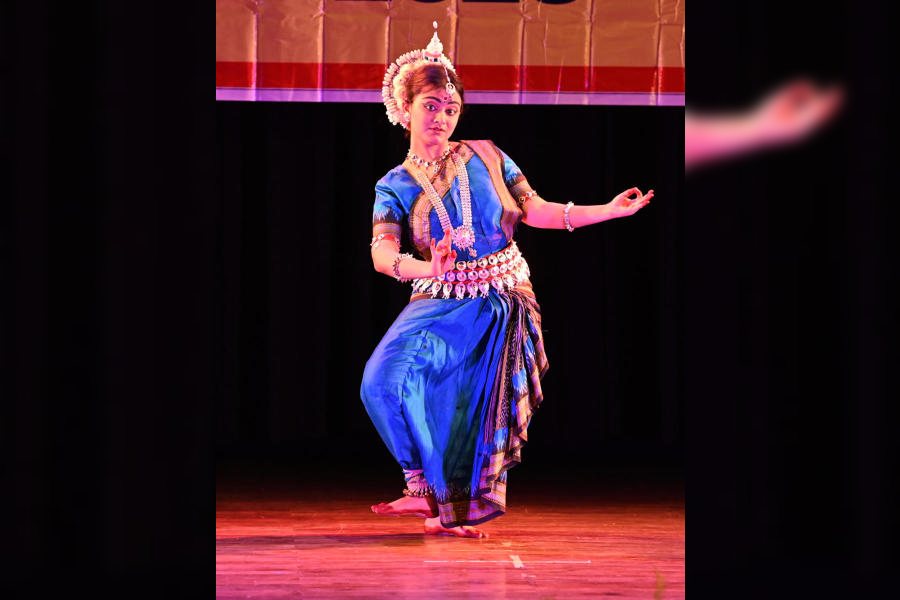The survival of any classical dance repertoire depends as much on the legacy of its exponents as its reception and innovations by budding practitioners. The performative idiom of Odissi has thus evolved from the ancient Mahari tradition to the modern-day proscenium presentation. Nritya Maalika, presented by the Calcutta-based Odissi Ashram, was meant to be a tribute to this form as well as its founder, Giridhari Nayak, who passed away last year. A disciple of Kelucharan Mohapatra, Nayak dedicated his life to not only honing his craft but also promoting Odissi by training a young crop of performers, engaging with both technique and pedagogy. This was reflected in the performances put up by his disciples through the course of the evening.
The tribute commenced with the invocation of the deity, Jagannath, through the Jagannath Ashtakam — based on a hymn composed by Adi Shankaracharya — by Odissi Ashram’s senior students. This was followed by the recital, “Kede chhanda”, by Sujata Nayak. Written by the Bhakti poet, Banamali, and depicting the episodes of Krishna’s leela, the composition allowed Sujata to prove her mettle by enacting the parts of both Yashoda and Putana. Her incorporation of subtle gestures within the conventional abhinaya was admirable.
This was followed by a group performance, Ranga Pravesham, by the Rahul Dev Mondal-led Kalakarma Foundation, that narrates the story of a student blossoming into a dancer. Directed by Mondal, the presentation highlighted his expertise in Bharatnatyam. But it lacked synchronisation and relied on the lead dancers to do most of the heavy lifting.
Ahana Bose performed Shankaravarnam Pallavi (picture), a pure dance number based on ektaal composed by Mohapatra. Her stable postures and anchored bhangis held the act together for more than 20 minutes; her eye expressions lent the recital a degree of subtlety. Other notable performances included Mangalacharan and Prabhandha Nartan by the Manipuri artist, Kuhelika Basu, and her troupe and Megh Pallavi by Rita Karmakar. Their intricate movements notwithstanding, the presentations were not even in their quality.










